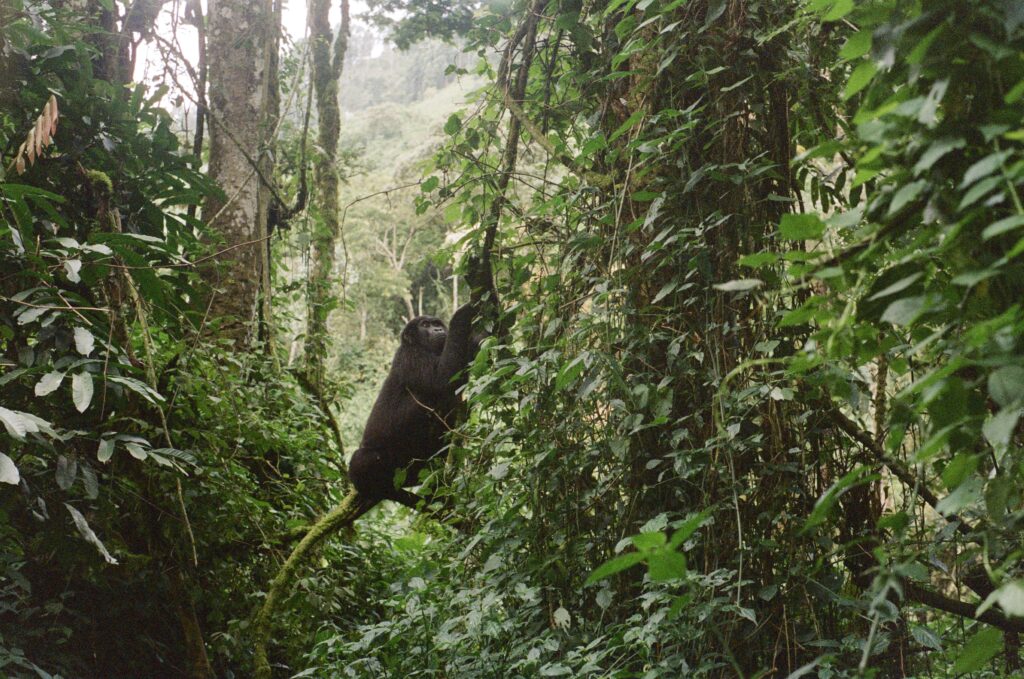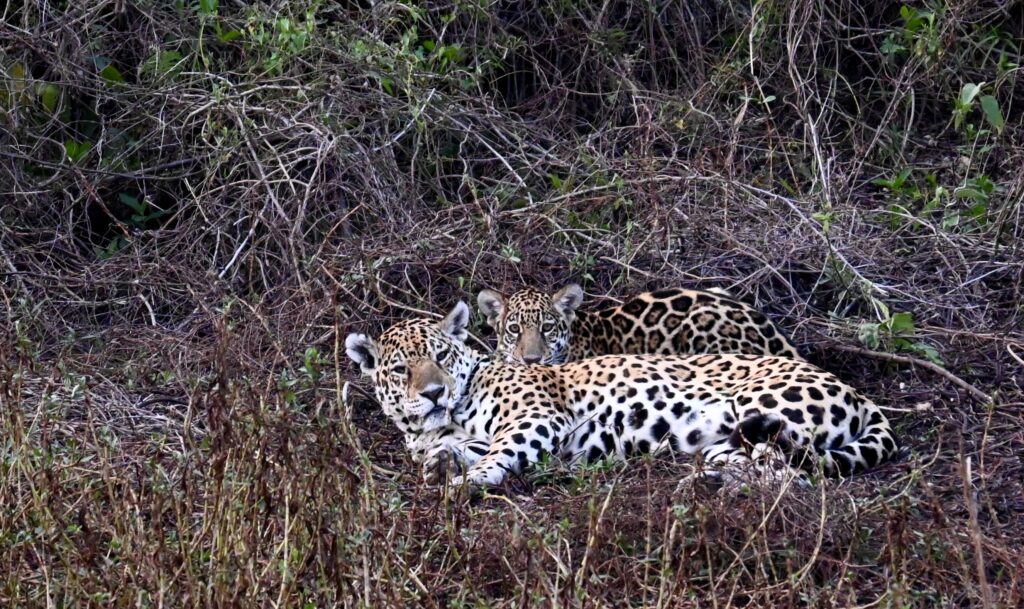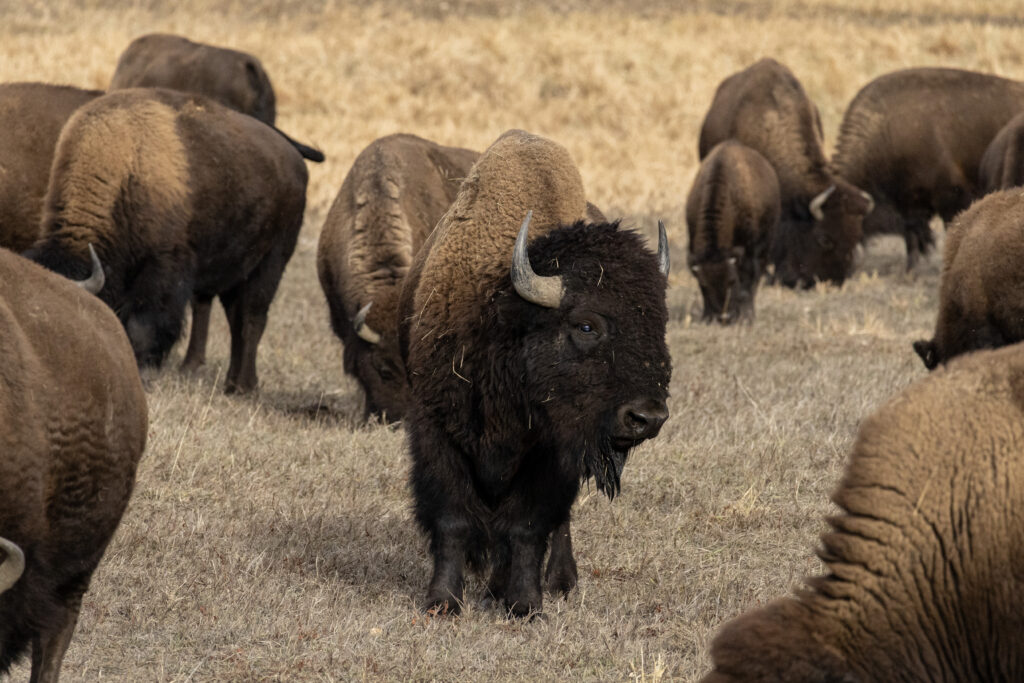Mozambique
Underwater Paradise, Sparkling Coastline, and Intrepid Safari
Mozambique is a tropical, idyllic coastal paradise in southeastern Africa that has become well-known for beaches and scuba diving. Neighbored by Malawi, Zimbabwe, Zambia, and the Indian Ocean, Mozambique has great biodiversity, from inland wetlands and mountains, to freshwater lakes and forests, to plateaus and, of course, its rich marine areas. The country is three times the size of the United Kingdom.
Pristine, near-deserted islands off the coast deliver dream settings with gorgeous beaches, turquoise waters, and almost no people. The diving and snorkeling is equally impressive, with excellent reefs and diverse marine communities. Mozambique’s coastline stretches for over 2,414 km (1,500 miles), almost double the length of California, from its southern border with South Africa all the way to Tanzania in the north, making it a convenient beach addition to both East and Southern Africa safaris. In the Southern half of Mozambique is the paradise of the Bazaruto Archipelago, while the north has the incredible Quirimbas Archipelago. Both areas have astounding islands with supreme marine environs.
When it comes to safari, Mozambique is a recovering destination that receives very low-density tourism. The Niassa Reserve in the far north is one of the largest protected areas on the continent and has large populations of many species. Gorongosa National Park is another potential safari destination. It suffered great wildlife losses during war times, but restoration efforts are well underway and this park deserves to be watched as an up-and-coming destination.
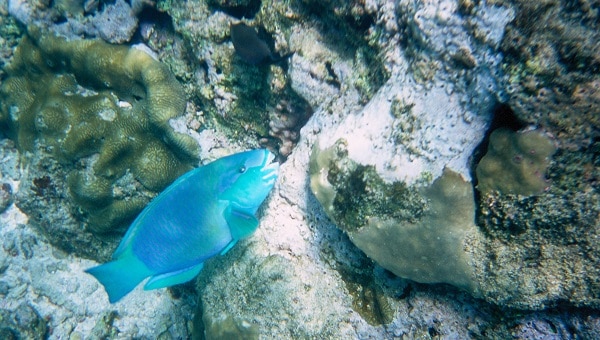
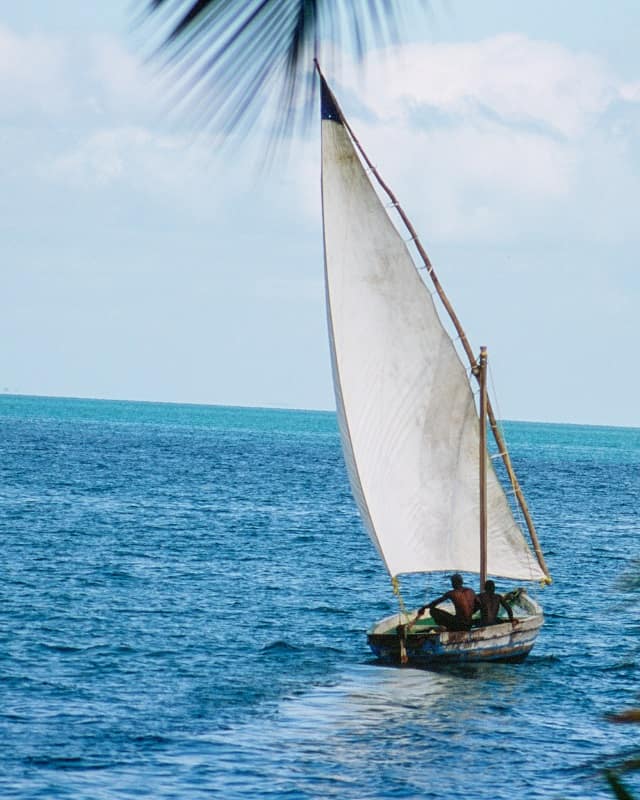
Mozambique Sample Safaris
Trip Report: Uganda – Kidepo Valley / Murchison Falls / Semliki / Queen Elizabeth / Bwindi, April 2025
In April, I was given the incredible opportunity to travel to Africa for the very first time, spending a total of twelve days soaking in the magic that is the Pearl of Africa - Uganda. Over the course of two unforgettable weeks, we spent nearly forty hours driving through diverse landscapes, exploring Uganda’s most iconic national parks and wildlife reserves along the way.
Trip Report: The Pantanal in Brazil, September 2024
Being an Africa enthusiast, I hadn’t spent much time in our closer neighbor, South America. So, when I was offered the chance to visit the wildlife rich Pantanal in Brazil, I knew it was an opportunity I couldn’t pass up. With my only other South American experience being the magic of the Galapagos Islands, I had very high expectations and this new adventure did not disappoint.
Experience Colorado’s Urban Safari at Rocky Mountain Arsenal Wildlife Refuge
Tucked away within the industrial sprawl on Denver’s outskirts, the Rocky Mountain Arsenal Wildlife Refuge offers free wildlife viewing and nature hikes in an unlikely setting. With a strikingly different origin as a chemical weapons site and eventually an environmental issue, this land has transformed into a thriving refuge for bison, raptors, black-footed ferrets, and other classic Colorado species.
Gorongosa: Paradise Restored
Journey to Mozambique's massive Gorongosa National Park, one of the most biodiverse places on the planet, with 1 million acres of wilderness with savannas, grasslands, wetlands, rivers, lakes, and montane rainforests on Mount Gorongosa to explore.
Top Mozambique Safari Locations
Mozambique Safari Regions

Pemba
Overview
Pemba is the major city in northern Mozambique. It is a traditional fishing port. The town features interesting Portuguese-colonial architecture. Most people come to Pemba to enjoy the beaches, diving, and fishing, and the experience of a quaint coastal town.
Location
Pemba is the capital city of the Cabo Delgado province situated on the Bay of Pemba, south of the Quirimbas Archipelago.
Access is by scheduled air service from Maputo, Johannesburg (South Africa), and Dar Es Salaam (Tanzania).
Wildlife
Scuba diving to view marine wildlife, and world-class fishing, are the highlights of Pemba. Coral reefs are close to the shore and fishing at St. Lazarus Banks is nearby.
Humpback whales can also be seen in the Pemba area from July to November. Other sea life include the dugong (similar to manatee), several species of dolphins, turtles, and manta rays.
Best Times to Go
The best time to visit Pemba is during the dry season from May to November. June, September, and August typically have the lowest chance of rain. The most humid month is typically February.

Quirimbas Archipelago
Overview
The Quirimbas Archipelago in northern Mozambique consists of more than 30 tropical islands and stretches for over 60 miles along the coast.
The marine area of Quirimbas National Park covers 1,500 km² (580 mi²)and includes 11 coral islands. Some of these islands have vertical drop-offs up to 400 meters (1,300 feet). A few of the most popular islands are Vamizi Island, Quilalea Island, and Matemo Island. Medjumbe Private Island and Ibo Island, the most historically interesting and a World Heritage site nominee, are also highlights.
Vamizi Island and its surrounding waters are home to some of the most endangered habitats and species in the Indian Ocean including 180 species of unbleached coral and 300 species of reef fish. These incredible reefs draw divers from around the world. Neptune’s Arm is one of the most renowned dive sites.
Quilalea Island, in the southern reaches of the archipelago, is a marine sanctuary, and very private and secluded as the only residents are hotel guests and staff.
Matemo Island is an exotic destination of beaches and lush vegetation, ideal for honeymooners and families. It offers marine activities as well as fascinating local culture.
Location
The Quirimbas Archipelago is located along the coast of northern Mozambique in the western Indian Ocean. The area has very little human development.
Access to the islands of the Quirimbas Archipelago is by short charter flights from Pemba.
Wildlife
The Quirimbas Archipelago has one of the world’s most biodiverse and rich coral reefs. Marine species include dugongs, turtles (leatherback, hawksbill, green, loggerhead), dolphins (spinner, bottlenose, striped, humpback), manta rays, and humpback whales.
Humpback whales pass through on their annual migration and can be seen from July to November. Humpback and spinner dolphins can be seen year-round.
The national park is home to a wide variety of bird species including fish eagles, herons, flamingos, plovers, kingfishers, and coucals.
Best Times to Go
The best time to visit the Quirimbas Archipelago between May and September during Mozambique’s winter months. Rainfall and temperatures are lowest during this time. However, many people also choose to visit during Mozambique’s hotter and more humid summer.
From November to mid-May, there is a chance of tropical cyclones affecting the islands. The ocean is warm enough to swim in year-round.

Bazaruto Archipelago
Overview
The Bazaruto Archipelago includes Bazaruto Island and Benguerra Island, the two largest islands off the coast of Mozambique. Bazaruto National Park is a marine national park that includes Bazaruto, Benguerra, Magaruque, Santa Carolina, and Bangue Islands.
The islands offer stunning white, sandy beaches, world-class scuba diving and snorkeling, and lush, diverse interiors from sand dunes to Savannah grasslands.
Other activities include dune boarding, 4WD adventures, catamaran island hopping, golf, saltwater fly-fishing, sea kayaking, horseback riding, big game fishing (marlin, tuna, sailfish), birdwatching, dhow trips, and island walks.
Location
The Bazaruto Archipelago is located off the southern coast of Mozambique. The gateway city to the islands is Vilanculos, 435 miles north of Maputo in the Inhambane province, directly opposite the islands.
Access is by flying to Vilanculos, on a chartered or commercial flight, via Johannesburg direct or via Maputo, Beira, or Inhambane. From Vilanculous you can take a road transfer to a jetty where you have a short speedboat transfer to the islands. It is also possible to take a charter flight or helicopter from Vilanculos to Bazaruto or Benguerra.
Wildlife
Bazaruto Archipelago National Park protects marine species including dugong, marine turtles, dolphins, humpback whales, and manta rays.
Along with incredible marine wildlife and coral reefs, freshwater lakes on both islands are home to crocodiles. Additionally, hundreds of bird species are found in the lush forests, including rare birds like the blue-throated sunbird, Rudd’s apalis, green pigeon, and olive bee-eater.
Best Times to Go
Bazaruto is best explored during the dry winter months of May to November. The summer months of December and January can be quite hot and unpleasant for those who dislike heat and humidity.

Maputo
Overview
Maputo is the capital city of Mozambique. It is an eclectic mixture of old and new architecture and buildings, with wide streets lined by palm and jacaranda trees.
Highlights of exploring Maputo include the Museu de Historia Natural; Museu National de Art which features the work of many contemporary artists; and the 19th century Fortaleza.
For a local experience, visit the Mercado Municipal with its variety of local produce, the FEIMA arts and crafts market, or the Centro Cultural Franco Mocambicano, which features bands performing on many evenings.
The Iron House of Maputo, designed by Gustave Eiffel and imported from Belgium in 1892, is one of the most unique buildings in Africa. Originally built as a governor’s home, it proved too hot for anyone to live in.
Location
Maputo is in the far southern reaches of Mozambique. Access is via commercial flight on many international airlines from destinations worldwide. Maputo has an international airport and is the gateway to reaching many other destinations within Mozambique.

The Niassa Reserve
Overview
The Niassa Reserve is over 16,000 square miles of protected area, twice the size of South Africa’s Kruger National Park. It is Mozambique’s largest reserve but is not a national park.
The scenery is stunning, with baobab trees, palms, and one of the largest protected miombo forests on Earth. Safari camps are rustic, vintage accommodations offering game drives, canoeing, and escorted walks.
The reserve receives very few visitors, which means the wildlife is not very habituated and can be more difficult to see. At the same time, it is an unfiltered and unadulterated wilderness experience that has remained truly wild and free from most human interference.
Location
Niassa is in far northern Mozambique, and shares its northern border with the southern border of Tanzania. Access is via scheduled or private charter flights from Pemba.
Wildlife
Elephants here are known for their large tusks. There are three species here endemic to the park: Boehm’s zebra, Niassa wildebeest, and Johnson’s impala. There are more than 370 bird species recorded including Pel’s fishing owl, Taita falcon, Boehm’s bee-eater, African skimmer, Stierling’s woodpecker, and the African pitta.
Other commonly seen species include sable antelope, Cape buffalo, African wild dog, lion, leopard, eland, hippo, and Lichtenstein’s hartebeest.
Best Times to Go
The best time to visit Niassa is during the dry season, July to October, when the bush is more dry and animals can be easier to see. The park does not get busy so, although this is “high” season, there are very few visitors.
November to March are hotter, wetter months to visit, but there are advantages to visiting during this season. The landscape turns lush and green, and it is prime birding time as migratory birds are present November to April. Many species are also giving birth during this time so there is high potential to see young. Some safari camps are only open from May through November.

Gorongosa National Park
Overview
Gorongosa National Park hosted thousands of visitors from all over the world between the 1940s to early 1980s. It was shut down in 1983 due to Mozambique’s civil war.
The park was first established as a hunting reserve in the 1920s. By 1960, it had grown in size and was officially declared a national park. The park was home to abundant wildlife, with lion populations in the hundreds and elephant populations in the thousands. During the country’s civil war, fighting took place in the park until 1992. From 1993 to 1996, professional hunters added to the loss of wildlife already suffered during the war. Many of Gorongosa’s large animal populations were reduced by 90 percent or more.
In 1994, the first efforts to restore the park and its wildlife began, and continued into the late nineties and early 2000s. In 2004, the Gorongosa Restoration Project (U.S. based nonprofit) teamed up with the Government of Mozambique to restore the national park. This was followed by wildlife relocation efforts, community meetings with local people, and rebuilding of the camp and infrastructure. By 2010, wildlife numbers in the park had risen about 40 percent over three years. In 2018, African wild dogs were reintroduced to the park. In 2019, Cyclone Idai devastated the center of the province where Gorongosa is located, but wildlife restoration efforts continue to be underway.
There is currently one major camp in Gorongosa called Chitengo Camp (also known as Montebelo Gorongosa Lodge). A new tented camp, Muzimu Tented Camp, was slated to open in 2020. Activities include guided game drives, canoe safaris, and boat safaris.
Location
Gorongosa National Park is in central Mozambique. Access is via scheduled flight from Beira, by way of Maputo or Johannesburg, or from Chimoio, by way of Maputo. Flights can also be chartered.
To reach Gorongosa from Beira, it is a 3.5-hour road transfer, or from Chimoio it is a 2-hour road transfer.
Wildlife
Wildlife restoration efforts have dramatically increased numbers in the park over the last few decades, but some species continue to be scarce, such as buffalo. Gorongosa is often referred to as the “Serengeti of the South” with its grassy floodplains and savannahs. Waterbuck numbers are high on the floodplains and other antelope species include sable, nyala, impala, reedbuck, bushbuck, and oribi.
Four of the “Big Five” are present in Gorongosa: elephant, lion, leopard, and buffalo. There are no rhino or cheetah in the park. Elephant, giraffe, zebra, hippo, warthog, baboon and lion are seen more commonly on game drives, while buffalo, wildebeest, leopard, hyena, and African wild dog are more rarely seen. A pack of 14 wild dogs was recently reintroduced to the park.
Over 150 different species of birds may be recorded in a single day during November, when migratory birds arrive in Mozambique. Some highlight bird species include African fish-eagle, green-headed oriole, weavers, grey crowned crane, and lilac-breasted roller.
Best Times to Go
Wildlife viewing is excellent during the July to October dry season as animals congregate around water pans that become hubs of activity. Huge herds of waterbuck and other antelope gather at the shores of Lake Urema.
Just after the wet season’s rains, from April to June, you will experience lush landscapes and a vibrant oasis. During these wetter months, elephants spread out more, impala are in rutting season, and crocodiles leave their lake refuge to head inland to rivers and pans.
The park is closed to tourism for the heaviest wet season, from mid-December to early March as roads are impassable.
